Sub-Projects
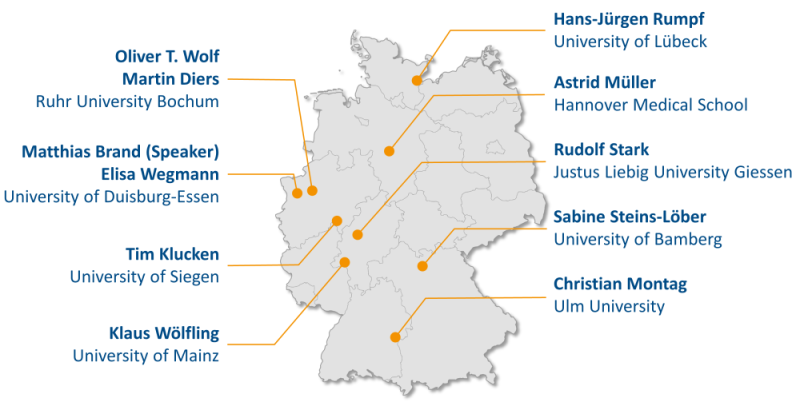
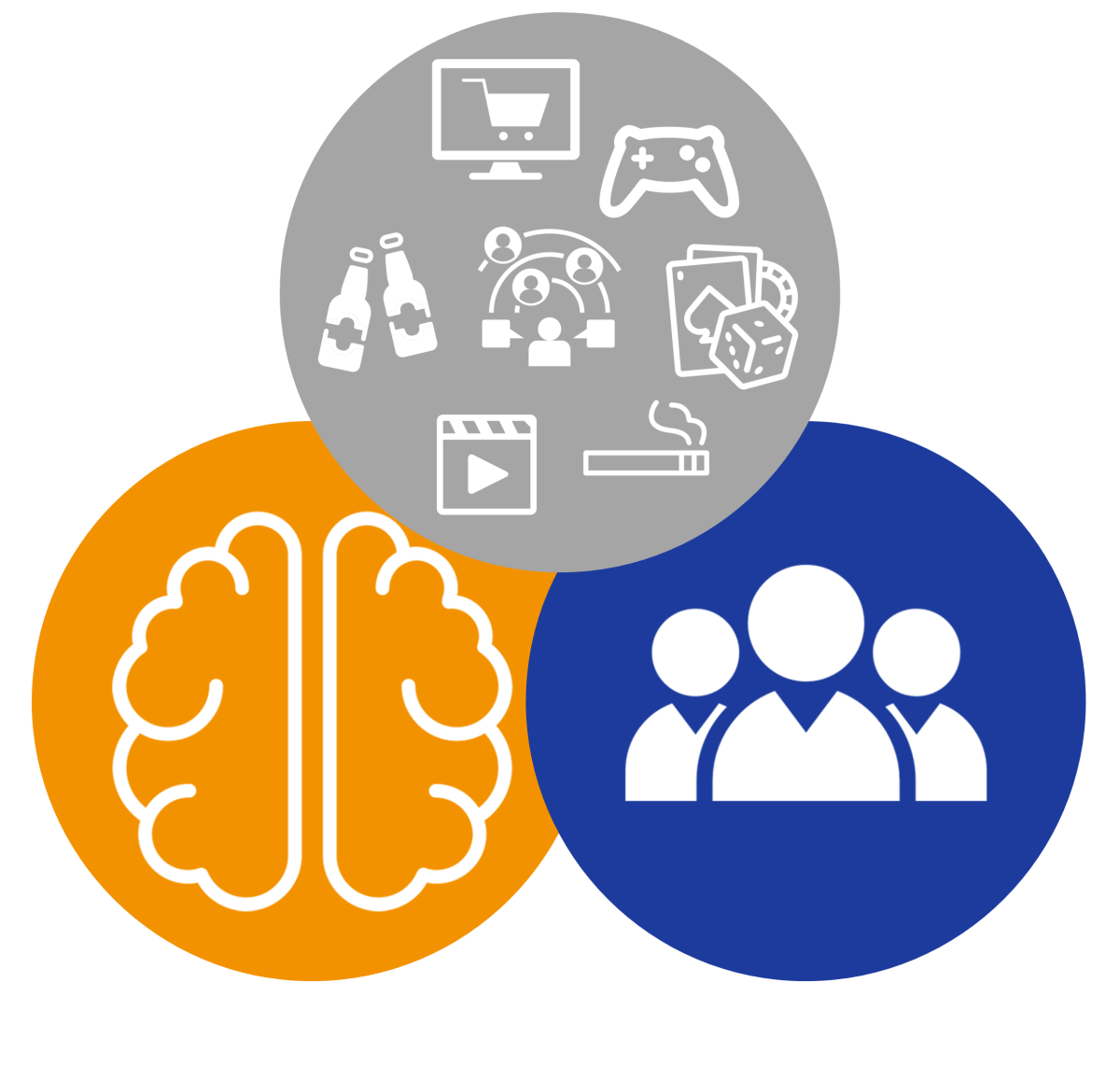
RP1: Comprehensive model-testing across different types of specific Internet-use disorders and other addictive behaviors
The I-PACE (Interaction of Person-Affect-Cognition-Execution) model provides a theoretical framework for specific Internet use disorders (IUDs) by addressing core mechanisms and possible interaction effects, and integrates several theories, concepts, and empirical findings from addiction research.
Read more
The I-PACE model is an important theoretical background and constitutes the overall framework of the Research Unit. The model focuses on the interactions between predisposing variables, and affective and cognitive responses resulting in the decision to use a certain application. The empirical findings on particular variables have been integrated in the I-PACE model, and very recent studies seem to confirm specific hypotheses that are expressed in the theoretical framework. The majority of previous studies, however, were limited to the investigation of a very specific aspect related to a particular type of IUD, without considering systematic interactions (moderating and mediating effects) among a comprehensive set of variables and among different types of IUD. This project aims to test the overall model assumptions of the Research Unit, which are based on the I-PACE model. Using data from a core battery of tests and questionnaires assessed in RP2-RP8, including individuals with specific types of IUD, the overall hypotheses of the Research Unit on the role of predictors, moderators, and mediators in explaining symptom severity of specific IUDs will be tested. Using mean structure analyses, commonalities and differences across specific types of IUD will be investigated. The potential shift from early to later stages (i.e. risky to pathological use) and the respective underlying mechanisms (e.g., stronger cue reactivity and additional involvement of reduced stimuli-specific inhibitory control in later stages) will be addressed in a systematic cross-sectional study including individuals with risky compared to pathological use of the applications relating to four proposed types of IUD. Results on specific situational triggers and individual experiences in everyday life will be validated using ambulatory assessment and compared across diverse types of IUD. Finally, longitudinal studies are very rare in this research field and we therefore aim to look at an at least six-month follow-up after the laboratory investigation that will investigate the relationships between specific affective and cognitive components and the development of symptoms in the subsequent months. RP1 may be considered as a central scientific project within the Research Unit, as it will integrate all data from the core battery from RP2-RP8 to test the overall research hypotheses. The link between RP1 and all other RPs is bidirectional: RP2-RP8 will provide the raw data for the overall analyses in RP1 and receive information on all assessed variables for use in the analyses of their specific project.
Project-related publications
Antons, S., Müller, S. M., Wegmann, E., Trotzke, P., Schulte, M. M. & Brand, M. (2019). Facets of impulsivity and related aspects differentiate among recreational and unregulated use of Internet-pornography. Journal of Behavioral Addictions, 8, 223-233.
Brand, M., Antons, S., Wegmann, E. & Potenza, M. N. (2019). Theoretical assumptions on pornography problems due to moral incongruence and mechanisms of addictive or compulsive use of pornography: Are the two “conditions” as theoretically distinct as suggested? Archives of Sexual Behavior, 48, 417-423.
Brand, M., Wegmann, E., Stark, R., Müller, A., Wölfling, K., Robbins, T. W. & Potenza, M. N. (2019). The Interaction of Person-Affect-Cognition-Execution (I-PACE) model for addictive behaviors: Update, generalization to addictive behaviors beyond Internet-use disorders, and specification of the process character of addictive behaviors. Neuroscience & Biobehavioral Reviews, 104, 1-10.
Brand, M., Young, K. S., Laier, C., Wölfling, K. & Potenza, M. N. (2016). Integrating psychological and neurobiological considerations regarding the development and maintenance of specific Internet-use disorders: An Interaction of Person-Affect-Cognition- Execution (I-PACE) model. Neuroscience & Biobehavioral Reviews, 71, 252-266.
Laier, C., Wegmann, E. & Brand, M. (2018). Personality and cognition in gamers: Avoidance expectancies mediate the relationship between maladaptive personality traits and symptoms of Internet-gaming disorder. Frontiers in Psychiatry, 9, 304.
Snagowski, J., Laier, C., Duka, T. & Brand, M. (2016). Subjective craving for pornography and associative learning predict tendencies towards cybersex addiction in a sample of regular cybersex users. Sexual Addiction & Compulsivity, 23, 342-360.
Trotzke, P., Starcke, K., Müller, A. & Brand, M. (2015). Pathological buying online as a specific form of Internet addiction: A model-based experimental investigation. PLoS ONE, 10, e0140296.
Trotzke, P., Starcke, K., Pedersen, A. & Brand, M. (2014). Cue-induced craving in pathological buying: Empirical evidence and clinical implications. Psychosomatic Medicine, 76, 694-700.
Wegmann, E., Stodt, B. & Brand, M. (2018). Cue-induced craving in Internet-communication disorder using visual and auditory cues in a cue-reactivity paradigm. Addiction Research & Theory, 26, 306-314.
Wegmann, E., Stodt., B. & Brand, M. (2015). Addictive use of social networking sites can be explained by the interaction of Internet use expectancies, Internet literacy, and psychopathological symptoms. Journal of Behavioral Addictions, 4, 155-162.
Project members
Principal Investigator: Prof. Dr. Matthias Brand
Members: Dr. Silke M. Müller, Annika Brandtner, Andreas Oelker (associated)

RP2: Transfer from goal-directed behavior to stimulus-response habits and its modulation by acute stress in gaming disorder and buying-shopping disorder
The ability of conditioned stimuli to affect instrumental responding is a robust finding from animal as well as human research and is considered a key factor for the development and maintenance of addictive behaviors. In Internet use disorders, Pavlovian conditioning processes are thought to intensify motivational responses, which can activate instrumental reward seeking.
Read more
However, there is very limited knowledge on the impact of conditioned cues on instrumental responding and of factors that affect these processes (e.g. acute stress) in individuals with risky or problematic use of specific Internet applications. While there is evidence that acute stress may trigger relapse in addictions, no study to date has investigated the effect of acute stress on the impact of conditioned cues on instrumental responding in individuals at risk for Internet use disorders. The aim of this project is to investigate the impact of conditioned stimuli on instrumental responding and possible effects of acute stress in early stages of gaming disorder and buying-shopping disorder. The project will include four groups (each with 64 participants): individuals with 1) risky use of games, 2) risky use of shopping applications, 3) non-problematic use of games, 4) non-problematic use of shopping applications. After completion of the diagnostics including the experimental and neuropsychological tasks of the core battery, a Pavlovian-Instrumental-Transfer (PIT) paradigm with stimuli and rewards related to gaming or buying-shopping will be used. In the Pavlovian training phase, two neutral stimuli will be paired either with gaming- or with buying-shopping stimuli. In the second phase, participants learn to perform different key presses to achieve gaming- or buying-shopping-related rewards. In the transfer phase, the conditioned stimuli from the Pavlovian training phase will be presented while the instrumental responses can be performed as before. An outcome devaluation will be implemented after the first half of the transfer phase. The role of acute stress will be investigated using the standardized Trier Social Stress Test, which will be administered after acquisition of the conditioned responses and learning of instrumental behavior. Reward expectancy ratings and attention allocation to the different experimental stimuli assessed with an eye-tracker will indicate conditioned responses while response choice and response rate indicate instrumental behavior. RP2 has strong synergies with RP3 and RP6, which will also investigate facets of cue reactivity. Furthermore, RP2 is connected to RP4, which will also address cue reactivity and acute stress. There are also synergies between RP2 and RP5, as both projects will investigate buying-shopping disorder and effects of acute stress.
Project-related publications
Czapla, M., Baeuchl, C., Simon, J., Richter, B., Kluge, M., Friederich, H.-C., … Loeber, S. (2017). Do alcohol-dependent patients show different neural activation during response inhibition than healthy controls in an alcohol-related fMRI go/no-go-task? Psychopharmacology, 234, 1001- 1015.
Czapla, M., Simon, J. J., Richter, B., Kluge, M., Friederich, H.-C., Herpertz, S., ... Loeber, S. (2016). The impact of cognitive impairment and impulsivity on relapse of alcohol-dependent patients: implications for psychotherapeutic treatment. Addiction Biology, 21, 873-884.
Loeber, S., & Duka, T. (2009). Acute alcohol impairs conditioning of a behavioural reward seeking response and inhibitory control processes – implications for addictive disorders. Addiction, 104, 2013-2022.
Müller, A., Mitchell, J. E., Crosby, R. D., Cao, L., Claes, L., & de Zwaan, M. (2012). Mood states preceding and following compulsive buying episodes: An ecological momentary assessment study. Psychiatry Research, 200, 575-580.
Müller, A., Steins-Loeber, S., Trotzke, P., Vogel, B., Georgiadou, E., & de Zwaan, M. (2019). Online shopping in treatment-seeking patients with buying-shopping disorder. Comprehensive Psychiatry, 94,152120.
Steins-Loeber, S., Madjarova, R., Lörsch, F., Herpertz, S. C., Flor, H., & Duka, T. (2019). An experimental study on spontaneous recovery of conditioned reward expectancies and instrumental responding in humans. Behavior Research and Therapy, 118, 54-64.
Trotzke, P., Starcke, K., Müller, A., & Brand, M. (2019). Cue-induced craving and symptoms of online-buying-shopping disorder interfere with performance on the Iowa Gambling Task modified with online-shopping cues. Addictive Behaviors, 96, 82-88.
Vogel, B., Trotzke, P., Steins-Loeber, S., Schäfer, G., Stenger, J., de Zwaan, M., … Müller, A. (2019). An experimental examination of cognitive processes and response inhibition in patients seeking treatment for buying-shopping disorder. PLoS ONE, 14, e0212415.
Vogel, V., Dittrich, M., Horndasch, S., Kratz, O., Moll, G. Erim, Y., … Steins-Loeber, S. (2019). Pavlovian-to-instrumental-transfer in Anorexia Nervosa: A pilot-study on conditioned learning and instrumental responding to low- and high-calorie food stimuli. European Journal of Neuroscience [Epub ahead of print]
Vogel, V., Kollei, I., Duka, T., Snagowski, J., Brand, M., Müller, A., & Loeber, S. (2018). Pavlovian-to-instrumental transfer: A new paradigm to assess pathological mechanisms with regard to the use of internet applications. Behavioural Brain Research, 347, 8-16.
Project members
Principal Investigators: Prof. Dr. Sabine Steins-Löber, Prof. Dr. Dr. Astrid Müller
Members: Tobias Thomas, Anna Schmid
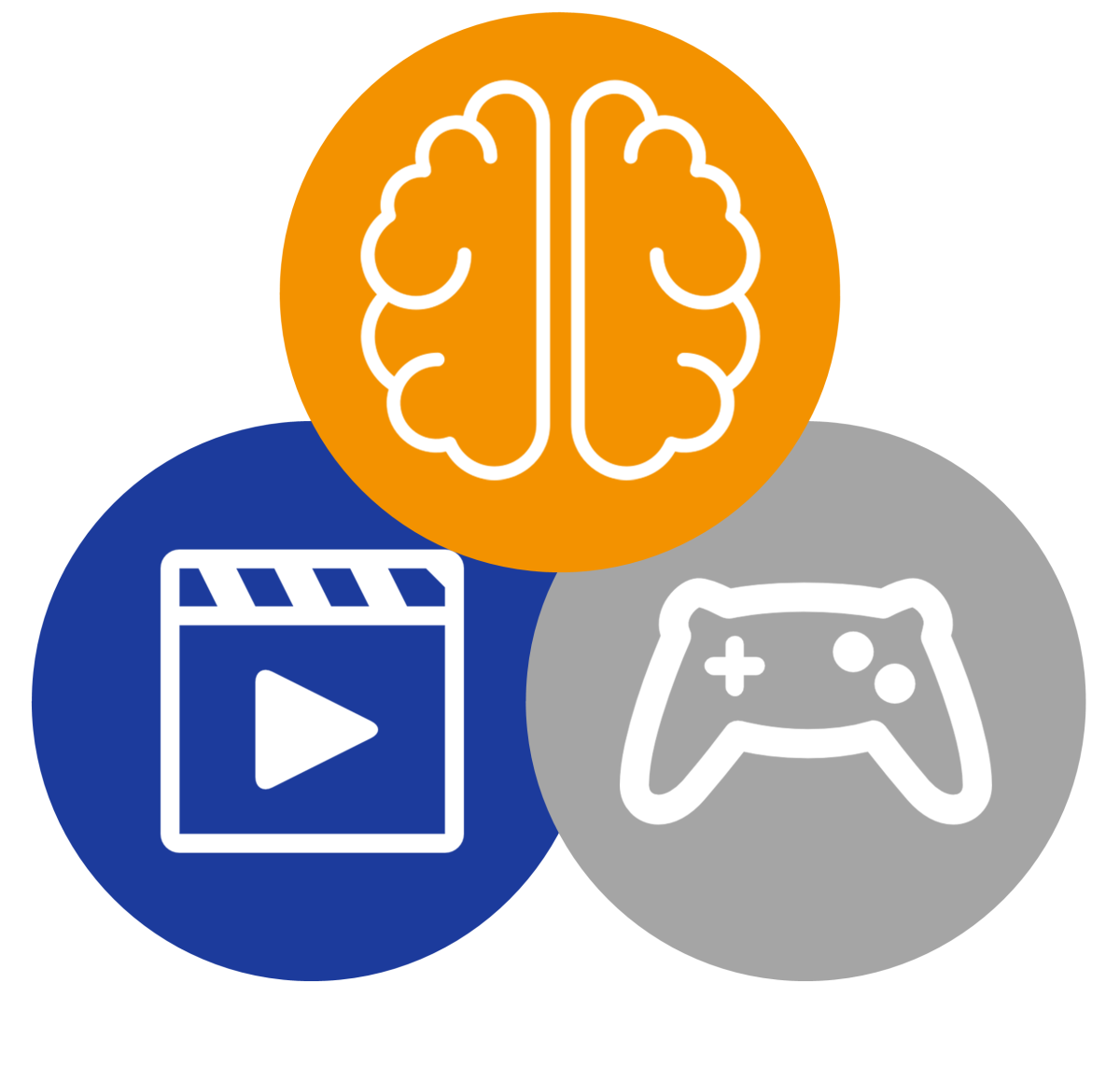
RP3: Appetitive extinction deficits and the risk of developing pornography-use disorder and gaming disorder
Appetitive conditioning and extinction processes are considered to be important components for the development, maintenance, and recovery of addictive behaviors. During the development of an addiction, formerly neutral stimuli are associated with the drug intake or with the addictive behavior through Pavlovian conditioning. The learning and relearning of addiction-related associations can be studied by appetititve conditioning experiments which comprise a conditioning phase, an extinction learning phase and an extinction test phase.
Read more
During the conditioning phase, one conditioned cue (CS+) is repeatedly paired with a rewarding, unconditioned stimulus (UCS), while another stimulus (CS-) predicts the absence of reward. After a few trials, the CS+ elicits higher conditioned responses than the CS-, such as increased skin conductance or neural responses. This appetitive value of the CS+ is associated with orbitofrontal cortex reactivity towards the stimulus, while the amygdala is often linked to the formation of associations, and the nucleus accumbens is considered to play a pivotal role in reward anticipation. During the process of extinction learning, the CS+ and CS- are repeatedly presented without the UCS, resulting in a decrease in conditioned responses, and finally leads to the result that the CS+ and CS- do not differ significantly at the end of extinction learning. After a certain time interval, the success of extinction learning is probed by means of an extinction test phase.In the present study, the hypothesis is tested whether individuals suffering from risky or pathological pornography-use or from risky or pathological use of games show addiction-specific deficits in extinction learning and extinction test. To date, no experiments addressing extinction processes in the context of pornography use disorder and gaming disorder have been conducted. This comparison is of particular interest because it allows to evaluate the impact of primary and secondary reinforcers.Five groups will be included: individuals with 1) pathological pornography use, 2) risky pornography use, 3) pathological gaming, 4) risky gaming, and 5) unproblematic use of pornography and games. Differences in neural activity will be compared between the groups. During day 1, the appetitive conditioning task and the extinction learning task (both during fMRI) will be conducted. One week later, participants will perform the extinction test. This RP shares common research questions with RP2, RP4, and RP6. While the other RPs mainly focus on responses and processing of the relevant stimulus material, the RP3 extends this view by analyzing the maintenance of these disorders through (disturbed) extinction processes.
Project-related publications
Alexander, N.*, Klucken, T.*, Koppe, G., Osinsky, R., Walter, B., Vaitl, D., . . . Hennig, J. (2012). Interaction of the serotonin transporter-linked polymorphic region and environmental adversity: Increased amygdala-hypothalamus connectivity as a potential mechanism linking neural and endocrine hyperreactivity. Biological Psychiatry, 72, 49–56.
Kagerer, S., Wehrum-Osinsky, Klucken, T., Walter, B., Vaitl, D., & Stark, R. (2014). Sex attracts: Investigating individual differences in attentional bias to sexual stimuli. PLoS ONE, 9, e107795.
Klucken, T., Kruse, O., Klein, S., Kampa, M., Tapia León I., & Stark, R. (2019). The relationship between neuroticism and appetitive conditioning. Neurobiology of Learning and Memory, 164, 107068.
Klucken, T., Kruse O., Schweckendiek, J., Kuepper, Y., Mueller, E. M., Hennig, J., & Stark, R. (2016). No evidence for blocking the return of fear by disrupting reconsolidation prior to extinction learning. Cortex, 79, 112-122.
Klucken, T., Kruse O., Wehrum-Osinsky, S., Schweckendiek, J., Hennig, J., & Stark, R. (2015). Impact of COMT Val158Met polymorphism on appetitive conditioning and amygdala/prefrontal effective connectivity. Human Brain Mapping, 36, 1093–1101.
Klucken, T., Wehrum, S., Schweckendiek, J., Merz, C. J., Hennig, J., Vaitl, D., & Stark, R. (2013). The 5-HTTLPR polymorphism is associated with altered hemodynamic responses during appetitive conditioning. Human Brain Mapping, 34, 2549–2560.
Stark, R., Kagerer, S., Walter, B., Vaitl, D., Klucken, T. & Wehrum-Osinsky, S. (2015). Trait Sexual Motivation Questionaire: Concept and validation. Journal of Sexual Medicine, 12, 1080- 1091.
Stark, R., Klein, S., Kruse, O., Weygandt, M., Leufgens, L.K., Schweckendiek, J., & Strahler, J. (2019). No sex difference found: Cues of sexual stimuli activate the reward system in both sexes. Neuroscience, 416, 63-73.
Stark, R., Klucken, T., Potenza, M. N., Brand, M., & Strahler, J. (2018). A current understanding of the behavioral neuroscience of compulsive sexual behavior and problematic pornography use. Current Behavioral Neuroscience Reports, 5, 218-231.
Stark, R., Wolf, O.T., Tabbert, K., Kagerer, S., Zimmermann, M., Kirsch, P., Schienle, A., & Vaitl, D. (2006). Influence of the stress hormone cortisol on fear conditioning in humans: Evidence for sex differences in the response of the prefrontal cortex. NeuroImage, 32, 1290-1298.
Project members
Principal Investigators: Prof. Dr. Tim Klucken, Prof. Dr. Rudolf Maria Stark
Members: Dr. Miriam Kampa, Kseniya Krikova, Isabell Tapia León
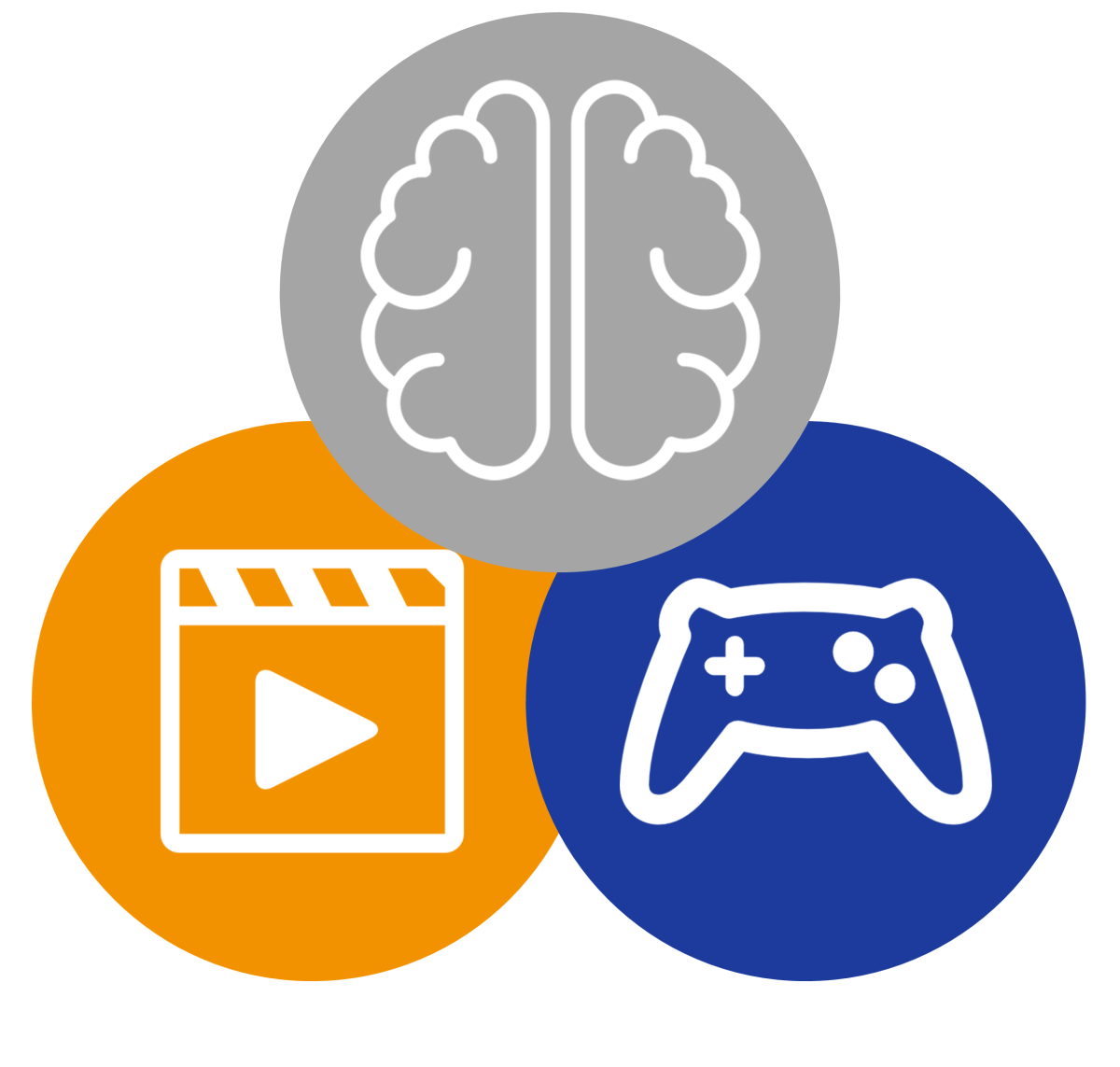
RP4: Cue reactivity in gaming disorder and pornography-use disorder: Behavioral and neural correlates and effects of acute stress
Cue reactivity and craving are core concepts in research on substance use disorders and addictive behaviors. Deficits in executive functions and decision making have also been considered as playing an important role in addictive behaviors. The association between acute stress and addictive behaviors may be moderated by executive functions.
Read more
Gaming disorder has been included in the ICD-11 as a disorder due to addictive behaviors. Pornography use disorder may be considered as a subcomponent of compulsive sexual behavior disorder, which has been included in the ICD-11. Many authors, however, rather see parallels between the specific problems in controlling the use of pornography and addictive behaviors, suggesting that pornography use disorder may be considered as subtype of Internet use disorders, comparable to gaming disorder. Neuroimaging studies on cue reactivity and craving in gaming disorder and pornography use disorder have shown activities in the ventral striatum and further structures involved in fronto-striatal loops. To date, there are no studies which systematically examined neural and behavioral correlates of cue reactivity and craving in gaming disorder compared to pornography use disorder. It is important to address this contrast given that pornography-related stimuli may be considered as natural rewards, compared to gaming-related stimuli, which may be considered as secondary reinforcers. This project aims at investigating 1) behavioral and neural correlates of cue reactivity and craving in gaming disorder compared to pornography use disorder, 2) the effects of acute stress on cue reactivity and craving, and 3) interactions between cue reactivity and craving, acute stress, and measures of executive functions and inhibitory control. The project will include five groups (each with 52 male participants): individuals with 1) gaming disorder, 2) risky use of games, 3) pornography use disorder, 4) risky use of pornography, and 5) control participants, who use both games and pornography non-problematically. The study will consist of three parts. At t1, the intensive diagnostics will be conducted including the experimental and neuropsychological tasks of the core battery. In the second part of t1, participants will be randomly assigned to either the stress condition of the Trier Social Stress Test or the control group and will perform a cue reactivity paradigm and a decision-making task with addiction-related pictures. At t2, the fMRI experiment (with 34 participants of each group) with a modified cue reactivity paradigm will be conducted. RP4 is strongly linked to RP2, RP3, and RP6, which will also investigate facets of cue reactivity. Moreover, there are links between RP4 and RP7, which will address inhibitory control and executive functions, and RP4 and RP5, which will examine effects of stress on cue reactivity.
Project-related publications
Antons, S., Müller, S. M., Wegmann, E., Trotzke, P., Schulte, M. M. & Brand, M. (2019). Facets of impulsivity and related aspects differentiate among recreational and unregulated use of Internet-pornography. Journal of Behavioral Addictions, 8, 223-233.
Antons, S. & Brand, M. (2018). Trait and state impulsivity in males with tendency towards Internet-pornography-use disorder. Addictive Behaviors, 79, 171-177.
Brand, M., Snagowski, J., Laier, C. & Maderwald, S. (2016). Ventral striatum activity when watching preferred pornographic pictures is correlated with symptoms of internet pornography addiction. NeuroImage, 129, 224-232.
Kamping, S., Andoh, J., Bomba, I., Diers, M., Diesch, E., & Flor, H. (2016). Contextual modulation of pain in masochists: involvement of the parietal operculum and insula. Pain, 157, 445-455.
Pabst, S., Brand, M., & Wolf, O. T. (2013). Stress effects on framed decisions: There are differences for gains and losses. Frontiers in Behavioral Neuroscience, 7, 142.
Schwabe, L., Dickinson, A., & Wolf, O. T. (2011). Stress, habits, and drug addiction: A psychoneuroendocrinological perspective. Experimental and Clinical Psychopharmacology, 19, 53-63.
Snagowski, J., Laier, C., Duka, T. & Brand, M. (2016). Subjective craving for pornography and associative learning predict tendencies towards cybersex addiction in a sample of regular cybersex users. Sexual Addiction & Compulsivity, 23, 342-360.
Starcke, K., Antons, S., Trotzke, P. & Brand, M. (2018). Cue-reactivity in behavioral addictions: A meta-analysis and methodological considerations. Journal of Behavioral Addictions, 7, 227- 238.
Starcke, K. & Brand, M. (2016). Effects of stress on decisions under uncertainty: A meta-analysis. Psychological Bulletin, 142, 909-933.
Yilmaz*, P., Diers*, M., Diener, S., Rance, M., Wessa, M., & Flor, H. (2010). Brain correlates of stress-induced analgesia. Pain, 151, 522-529. *Both authors contributed equally to this work.
Project members
Principal Investigators: Prof. Dr. Matthias Brand, Prof. Dr. Oliver Tobias Wolf, Prof. Dr. Martin Diers
Members: Dr. Stephanie Antons, Lukas Mallon, Kjell Büsche (associated)

RP5: Effekts of acute stress on cue reactivity and implicit cognitive mechanisms in buying-shopping disorder and social-networks-use disorder
Cue reactivity and craving, or the strong desire to consume a substance, are considered to be underlying mechanisms in the development and maintenance of substance use disorders. Implicit cognitive mechanisms are described as further key components of an addictive behavior, including attentional bias for a substance and implicit associations with substance intake.
Read more
The I-PACE (Interaction of Person-Affect-Cognition-Execution) model provides a theoretical framework describing key concepts of the development and maintenance of an addictive behavior, which also encompasses the interplay of cue reactivity, craving, and implicit cognitions. It is assumed that stress may influence affective and cognitive responses in individuals with behavioral addictions, including those with Internet use disorder. One of the most significant changes to the buying-shopping environment is the migration of traditional acquisition of goods to the online retail market, potentially contributing to nowadays predominantly online buying-shopping disorder. Communication behaviors are also changing, and a growing number of individuals are suffering from negative consequences and diminished control due to overuse of online communication applications. With the inclusion of gaming disorder in the ICD-11 as a disorder due to addictive behavior, buying-shopping disorder and social network use disorder are discussed as further specific types of Internet use disorders. Previous studies mainly show the relevance of cue reactivity and craving in both addictive behaviors, and of implicit cognitions in buying-shopping disorder. Research on implicit cognitions in social network use disorder, effects of acute stress, and the interaction of these aspects in both specific Internet use disorders are lacking. The research project addresses the predictive role of acute psychosocial stress for cue reactivity, craving, and addiction-related implicit cognitive processes in four groups, namely women with 1) buying-shopping disorder and 2) social network use disorder, compared to women with 3) non-problematic buying-shopping behavior and 4) non-problematic use of social networks. Besides the surveys and structured interviews for the diagnostics and the experimental and neuropsychological tasks of the core battery, an Implicit Association Test and a dot-probe task with addiction-related stimuli will be administered. The role of acute stress will be investigated using the standardized Trier Social Stress Test compared to a non-stressful control condition. The research project is strongly linked to RP2 and RP4, since these projects will examine effects of acute stress on cue reactivity in buying-shopping disorder (RP2), gaming disorder, and pornography use disorder (RP4). Further synergy effects are expected with RP8, addressing implicit cognitions in social network use disorder, and with RP7, addressing implicit associations in different addictive behaviors as well.
Project-related publications
Müller, A., Mitchell, J. E., Crosby, R. D., Cao, L., Claes, L., & de Zwaan, M. (2012). Mood states preceding and following compulsive buying episodes: An ecological momentary assessment study. Psychiatry Research, 200, 575-580.
Müller, A., Steins-Loeber, S., Trotzke, P., Vogel, B., Georgiadou, E., & de Zwaan, M. (2019). Online shopping in treatment-seeking patients with buying-shopping disorder. Comprehensive Psychiatry, 94, 152120.
Schwabe, L. & Wolf, O. T. (2013). Stress and multiple memory systems: From 'thinking' to 'doing'. Trends in Cognitive Sciences, 17, 60-68.
Schwabe, L., Dickinson, A., & Wolf, O. T. (2011). Stress, habits, and drug addiction: A psychoneuroendocrinological perspective. Experimental and Clinical Psychopharmacology, 19, 53-63.
Starcke, K., Wolf, O. T., Markowitsch, H. J., & Brand, M. (2008). Anticipatory stress influences decision making under explicit risk conditions. Behavioral Neuroscience, 122, 1352-60.
Vogel, B., Trotzke, P., Steins-Loeber, S., Schäfer, G., Stenger, J., de Zwaan, M., Brand, M., & Müller, A. (2019). An experimental examination of cognitive processes and response inhibition in patients seeking treatment for buying-shopping disorder. PLoS ONE, 14, e0212415.
Voth, E. M., Claes, L., Georgiadou, E., Selle, J., Trotzke, P., Brand, M., ... Müller, A. (2014). Reactive and regulative temperament in patients with compulsive buying and non-clinical controls measured by self-report and performance-based tasks. Comprehensive Psychiatry, 55, 1505-1512.
Wegmann, E. & Brand, M. (2016). Internet-communication disorder: It’s a matter of social aspects, coping, and Internet-use expectancies. Frontiers in Psychology, 7, 1747.
Wegmann, E., Mueller, S. M., Ostendorf, S., & Brand, M. (2018). Highlighting Internet-communication disorder as further Internet-use disorder when considering neuroimaging studies. Current Behavioral Neuroscience Reports, 5, 295-301.
Wegmann, E., Stodt, B., & Brand, M. (2018). Cue-induced craving in Internet-communication disorder using visual and auditory cues in a cue-reactivity paradigm. Addiction Research & Theory, 26, 306-314.
Project members
Principal Investigators: Prof. Dr. Dr. Astrid Müller, Dr. Elisa Wegmann, Prof. Dr. Oliver Tobias Wolf
Members: Annica Kessling, Millie Joshi
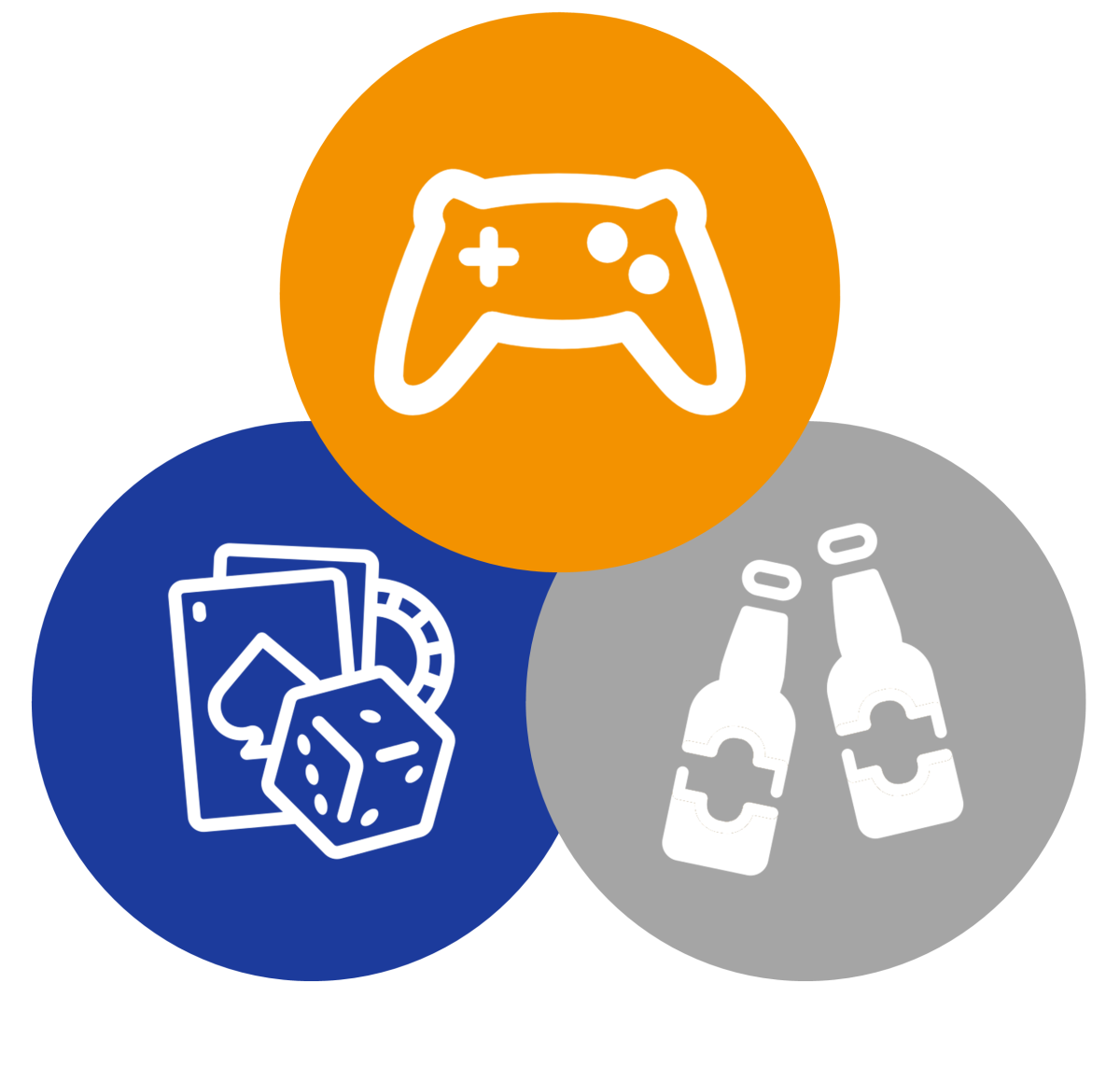
RP7: Implicit associations and altered cue-associated impulse control in gaming disorder, gambling disorder, and alcohol-use disorder
Dual-process theories of addiction differentiate between explicit and implicit cognitions involved in addictive behaviors. They also distinguish between a controlled (reflective) and an automatic (impulsive) system and argue that controlled processing is associated with explicit cognitions, while automatic processing is linked to implicit cognitions.
Read more
Explicit cognitions are frequently associated with executive functions, which may act as top-down processes linked to prefrontal cortex integrity, potentially controlling implicit cognitions and affective processes like craving and incentive salience. Deficits in executive functions have been considered both as vulnerability factors for the development of addictive behaviors and as potential consequences of substance-use disorders. Furthermore, it is argued that decision making, which may be characterized as the result of the interaction between affective processes (e.g., craving) and explicit cognitions (e.g., inhibitory control) is impaired in substance use disorders and addictive behaviors in terms of a preference for short-term rewarding options which may be linked to negative consequences in the long term. This project aims at investigating the relationships between implicit cognitions, stimulus-specific inhibitory control, stimulus-specific monitoring functions, and decision making upon confrontation with addiction-related stimuli in gaming disorder, gambling disorder, and alcohol-use disorder. These three disorders have been classified in the ICD-11 within the category of disorders due to substance use or addictive behaviors. There is reliable evidence, including results from meta-analyses, of altered implicit and explicit cognitions in individuals with gaming disorder, gambling disorder and substance-use disorders (e.g., alcohol-use disorder). Most previous studies focused on single aspects of either implicit or explicit cognitive functions and did not consider interactions among implicit and explicit cognitions when addiction-related cues are involved. These interactions will be investigated and compared between all three mentioned disorders. Four groups of participants will be included in the study: patients with 1) gaming disorder, 2) gambling disorder, 3) alcohol-use disorder, and 4) healthy controls. Besides the surveys and structured interviews for the diagnostics and the experimental and neuropsychological tasks of the core battery, an Implicit Association Test, the Balanced Switching Task, the Iowa Gambling Task with additional assessment of skin conductance response, each task using addiction-related stimuli, will be administered. The research project is strongly linked to RP4 assessing decision making under ambiguity in gaming disorder and pornography-use disorder, RP5 assessing implicit cognitions in buying-shopping disorder and social-networks-use disorder, and RP8 assessing implicit cognitions in social-networks-use disorder and tobacco-use disorder.
Project-related publications
Czapla, M., Baeuchl, C., Simon, J. J., Richter, B., Kluge, M., Friederich, H.-C., … Loeber, S. (2017). Do alcohol-dependent patients show different neural activation during response inhibition than healthy controls in an alcohol-related fMRI go/no-go-task? Psychopharmacology, 234, 1001-1015.
Czapla, M., Simon, J. J., Richter, B., Kluge, M., Friederich, H.-C., Herpertz, S., … Loeber, S. (2016). The impact of cognitive impairment and impulsivity on relapse of alcohol-dependent patients: Implications for psychotherapeutic treatment. Addiction Biology, 21, 873-884.
Czapla, M., Simon, J. J., Friederich, H.-C., Herpertz, S. C., Zimmermann, P., & Loeber, S. (2015). Is binge drinking in young adults associated with an alcohol-specific impairment of response inhibition? European Addiction Research, 21, 105-113.
Duven, E., Müller, K. W., Beutel, M. E. & Wölfling, K. (2015). Altered reward processing in pathological computer gamers – ERP-results from a semi-natural Gaming-Design. Brain and Behavior, 5, 13-23.
Loeber, S., Croissant, B., Nakovics, H., Zimmer, A., Georgi, A., Klein, S., … Flor, H., (2007). The startle-reflex in alcohol dependent patients: Changes after cognitive-behavioral therapy and predictive validity for drinking behaviour. Psychotherapy and Psychosomatics, 76, 385- 390.
Müller, K. W., Beutel, M. E., Egloff, B., & Wölfling, K. (2014). Investigating risk factors for Internet gaming disorder: A comparison of patients with addictive gaming, pathological gamblers and healthy controls regarding the big five personality traits. European Addiction Research, 20, 129-136.
Thalemann, R., Wölfling, K. & Güsser, S. M. (2007). Specific cue-reactivity on computer game related cues in excessive gamers. Behavioral Neuroscience, 121, 614-8.
Wölfling, K., Mörsen, C. P., Duven, E., Albrecht, U., Grüsser, S. M., & Flor, H. (2011). To gamble or not to gamble: At risk for craving and relapse – learned motivated attention in pathological gambling. Biological Psychology, 87, 275-281.
Wölfling, K., Müller, K. W., & Beutel, M. E. (2011). Reliability and validity of the scale for the assessment of pathological computer-gaming (CSV-S). Psychotherapie, Psychosomatik, Medizinische Psychologie, 61, 216–224.
Wölfling, K., Müller, K. W., Dreier, M., Ruckes, C., Deuster, O., Batra, A., ... & Beutel, M. E. (2019). Efficacy of short-term treatment of internet and computer game addiction: A randomized clinical trial. JAMA psychiatry, 76(10), 1018-1025.
Project members
Principal Investigators: Prof. Dr. Sabine Steins-Löber, Dr. Klaus Wölfling
Members: Nanne Dominick
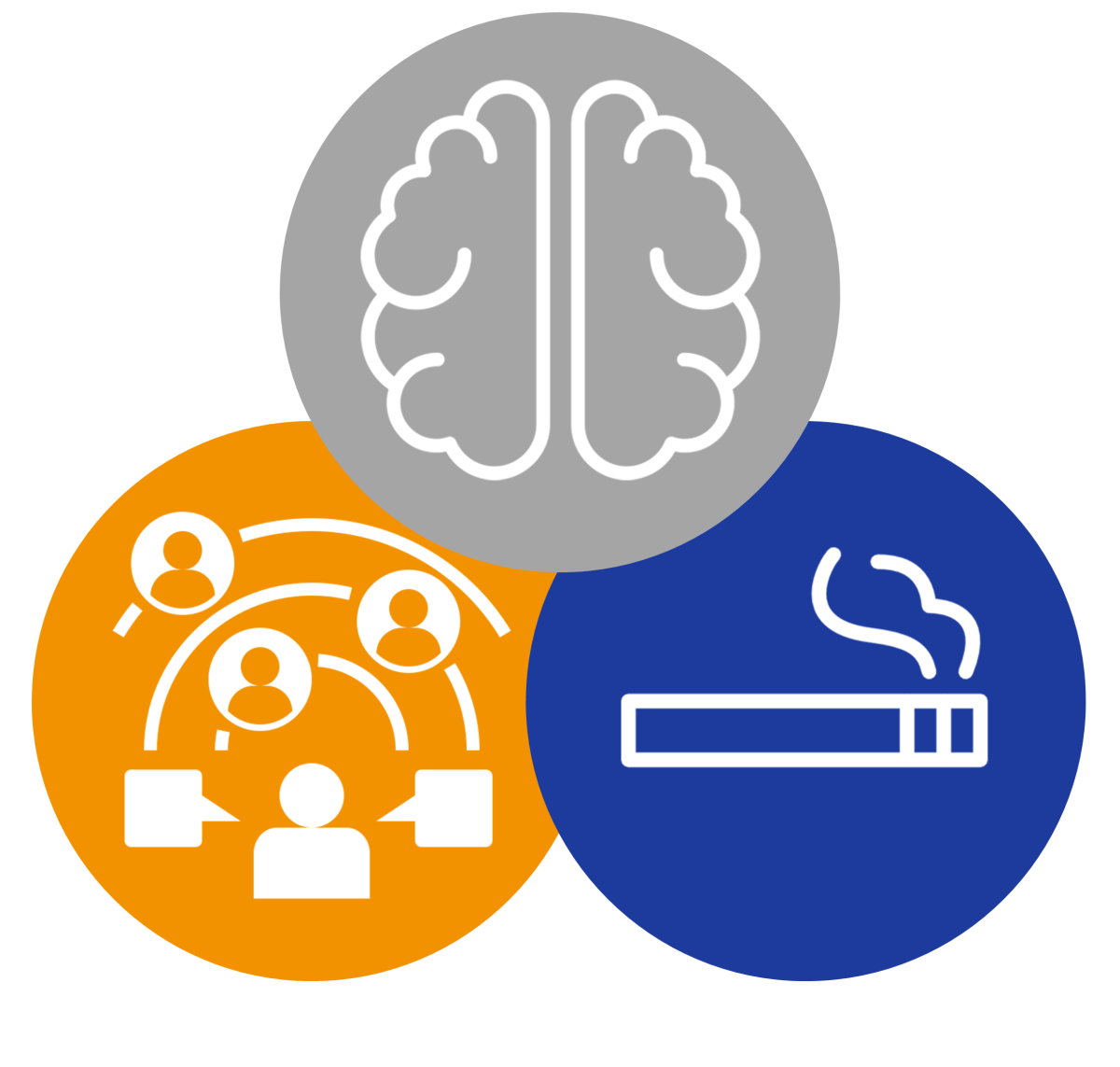
RP8: Implicit cognitions, use expectancies, and gratification in social-networks-use disorder and tobacco use disorder
Social networks like Facebook or Instagram are widely used. With the inclusion of gaming disorder in the ICD-11 as a disorder due to addictive behaviors, the problematic use of social networks is discussed as one further specific type of Internet use disorders.
Read more
The I-PACE (Interaction of Person-Affect-Cognition-Execution) model provides a theoretical framework describing key concepts and their interactions likely involved in the development and maintenance of addictive behaviors. Implicit cognitions such as implicit associations linked to automatic processing and approach tendencies may override the control system by exacerbating goal-directed inhibitory processes. Use expectancies refer to subjective thoughts regarding concrete effects of drug intake or of a specific behavior. These expectancies might be experienced explicitly or implicitly and are likely based on underlying cognitive processes. After experiencing positive outcomes, this could result in positive (implicit) associations and in the experience of gratification and compensation of subjective needs. Studies have already demonstrated the relevance of implicit cognitions in substance-use disorders (e.g., tobacco-use disorder), as well as in gaming disorder and pornography-use disorder. However, studies investigating implicit cognitions in social-networks-use disorder are lacking. Furthermore, there is empirical evidence underlining the relevance of use expectancies in tobacco-use disorder and social-networks-use disorder, but no research has investigated potential interactions with implicit cognitions and the experience of gratification and/or compensation. This project aims at investigating the relevance of 1) implicit cognitions upon confrontation with addiction-related stimuli, 2) the experiences of gratification and compensation when using online social networks, and 3) use expectancies in social-networks-use disorder and tobacco-use disorder. It will be the first to compare individuals with social-networks-use disorder and individuals with tobacco-use disorder. The project will include four groups: individuals with 1) social-networks-use disorder, 2) risky use of social networks, 3) non-problematic use of social networks, and 4) tobacco-use disorder. Besides the surveys and structured interviews for the diagnostics and the experimental and neuropsychological tasks of the core battery, an Implicit Association Test with addiction-related stimuli and an online application for data-tracking assessing gratification and compensation within the two weeks after assessment will be administered. The main research question is strongly linked to RP7 investigating implicit cognitions in individuals with alcohol-use disorder, gaming disorder, and gambling disorder, and RP5, which will also address implicit associations in social-networks-use disorder and buying-shopping disorder.
Project-related publications
Besser, B., Loerbroks, L., Bischof, G., Bischof, A., & Rumpf, H.-J. (2019). Performance of the DSM-5-based criteria for Internet addiction: A factor analytical examination of three samples. Journal of Behavioral Addictions, 8, 288-294.
Montag, C., Blaszkiewicz, K., Lachmann, B., Sariyska, R., Andone, I., Trendafilov, B., & Markowetz, A. (2015). Recorded behavior as a valuable resource for diagnostics in mobile phone addiction: Evidence from psychoinformatics. Behavioral Science, 5, 434-442.
Montag, C., Blaszkiewicz, K., Sariyska, R., Lachmann, B., Andone, I., Trendafilov, B., … Markowetz, A. (2015). Smartphone usage in the 21st century: Who is active on WhatsApp? BMC Research Notes, 8, 331.
Montag, C., Markowetz, A., Blaszkiewicz, K., Andone, I., Lachmann, B., Sariyska, R., ... Markett, S. (2017). Facebook usage on smartphones and gray matter volume of the nucleus accumbens. Behavioural Brain Research, 329, 221-228.
Rumpf, H.,-J., Vermulst, A. A., Bischof, A., Kastirke, N., Gurtler, D., Bischof, G., … Meyer, C. (2014). Occurence of internet addiction in a general population sample: A latent class analysis. European Addiction Research, 20, 159-166.
Wegmann, E. & Brand, M. (2016). Internet-communication disorder: It's a matter of social aspects, coping, and Internet-use expectancies. Frontiers in Psychology, 7, 1747.
Wegmann, E., & Brand, M. (2019). A narrative overview about psychosocial characteristics as risk factors of a problematic social networks use. Current Addiction Reports.
Wegmann, E., Stodt, B., & Brand, M. (2015). Addictive use of social networking sites can be explained by the interaction of Internet use expectancies, Internet literacy, and psychopathological symptoms. Journal of Behavioral Addictions, 4, 155-162.
Sevelko, K., Bischof, G., Bischof, A., Besser, B., John, U., Meyer, C., & Rumpf, H.-J. (2018). The role of self-esteem in Internet addiction within the context of comorbid mental disorders: Findings from a general population-based sample. Journal of Behavioral Addictions, 7, 976- 984.
Zadra, S., Bischof, G., Besser, B., Bischof, A., Meyer, C., John, U., & Rumpf, H.-J. (2016). The association between Internet addiction and personality disorders in a general population-based sample. Journal of Behavioral Addictions, 5, 691-699.
Project members
Principal Investigators: Prof. Dr. Christian Montag, PD Dr. Hans-Jürgen Rumpf, Dr. Elisa Wegmann
Members: Lasse David Schmidt

